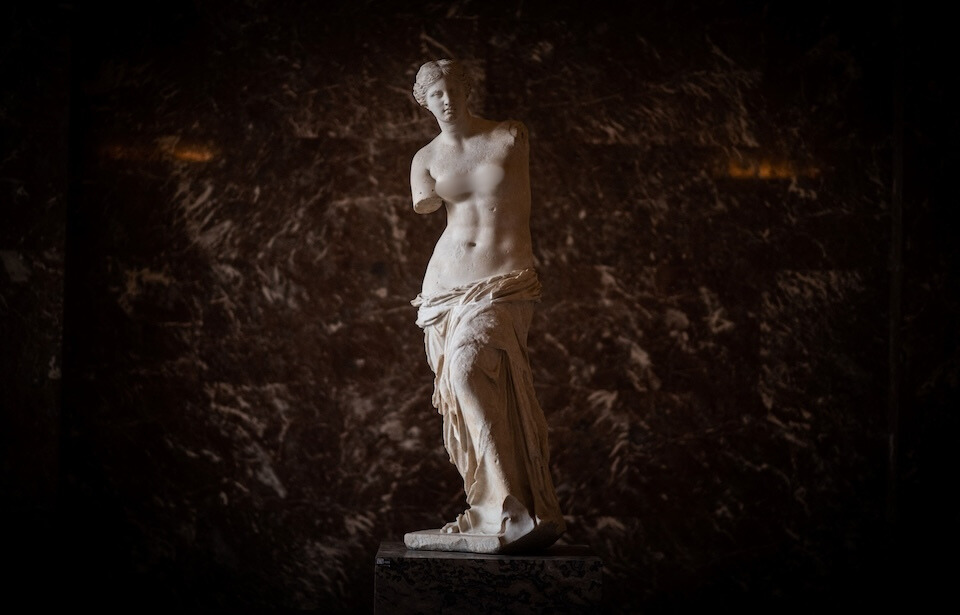The Venus de Milo is considered by many to be the most famous ancient Greek sculpture ever discovered. Since being located in 1820, it’s captured the interests of many with its beauty and mysterious origins. Where did Venus come from, and why was she sculpted? Inspiring countless artists, poets and historians, the famous statue is one of the most recognizable pieces of art to ever be made.
Design of the Venus de Milo
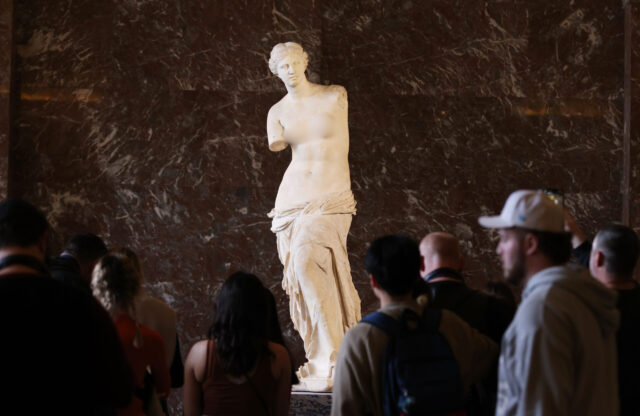
The Venus de Milo is an ancient Greek statue that’s been dated by scholars to the Hellenistic period. While the exact date when it was carved remains uncertain, most agree it came about sometime between 160-110 BC. The design combines elements from the classical and Hellenistic period; its eyes and mouth, strong brow and nose are associated with the classical era, while Venus‘ torso shape and the deeply carved drapery around the waist are clearly in the Hellenistic style.
The sculpture stands at larger than life, at six-feet, seven-inches, and is sculpted from Parian marble. It’s famously missing both arms, along with its left foot and both earlobes. While there’s debate over the original pose of the statue’s arms, a now-lost hand holding an apple was found near it when it was first discovered.
More recent scientific work supports the theory that the hand was part of the sculpture, giving credence to the main theory that it depicts the goddess Aphrodite, counterpart of the Roman goddess Venus.
Discovery of the Venus de Milo
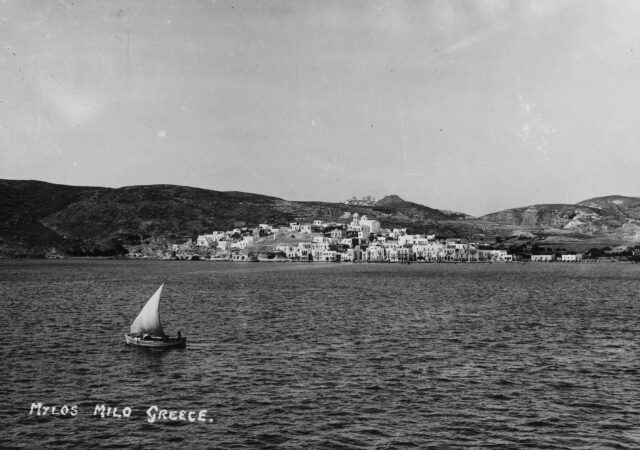
The Venus de Milo was discovered on April 8, 1820, by a Greek farmer on the island of Milos. The discovery was witnessed by French sailor Olivier Voutier, who encouraged the farmer to dig out the rest of the statue.
Voutier and the farmer unearthed two large pieces of Venus and a third smaller one. They also found a fragment of the statue’s arm, the aforementioned hand holding the apple and two herms. On top of this, part of the sculptor’s signature was found and later recorded on a drawing by Auguste-Hyacinthe Debay, although it has since been lost.
French sailor Jules Dumont D’Urville arrived on Milos shortly after the discovery was made, and he immediately recognized the statue’s value. He wrote an account, stating the sculpture was found in a quadrangular niche. He also noted a second inscription found with the statue, commemorating a dedication by Bakchios, son of Satios, assistant gymnasiarch.
If this was where the Venus de Milo was originally displayed, the niche and the inscription suggest it was in a gymnasium.
Purchased and taken to France
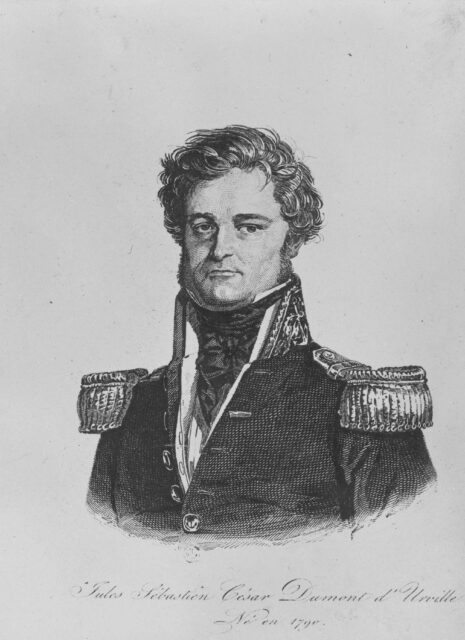
Jules Dumont D’Urville wanted to purchase the Venus de Milo immediately, but he didn’t have enough room on his ship. Instead, he sailed to Constantinople and reported the find to French Ambassador Charles François de Riffardeau, Marquis de Rivière, who agreed that D’Urville should acquire the statue. As such, he returned to Milos to purchase it.
However, by the time D’Urville returned, the farmer had sold the statue to a priest, who was putting it onto a ship. Luckily, the French ambassador’s vessels arrived in time to stop the sale.
Thus, the Venus de Milo was purchased and taken to France. Once there, it was installed in the Louvre, in Paris, by King Louis XVIII. On the recommendation of French archeologist Antoine Chrysostome Quatremère, the sculpture wasn’t repaired; unlike most other statues discovered around that time, Venus was displayed in the state in which it was discovered.
Displayed at the Louvre
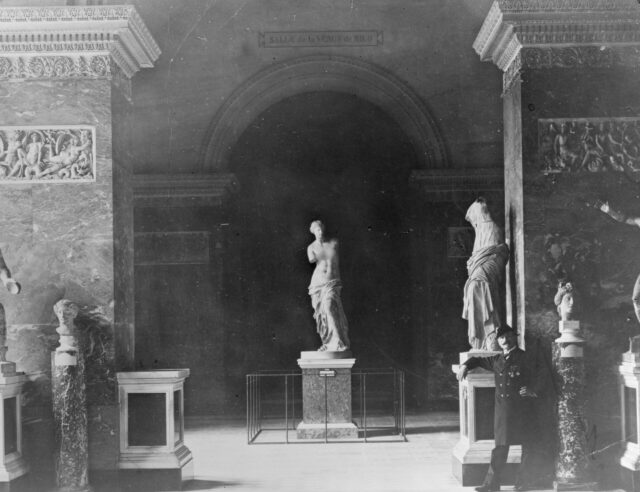
In 1936, the Venus de Milo was moved to the Louvre’s Salle de la Vénus de Milo, to accommodate an increasingly high volume of visitors. At this time, the sculpture was separated from others in the collection.
During World War II, it was removed from the Louvre and stored at the Château de Valençay, to keep it safe. Since the Venus de Milo was bought, the statue has only left France once. In 1964, it was exhibited in Tokyo and Kyoto, both in Japan.
In 2010, the statue was installed in a new setting, allowing the fragments that were discovered with it to be displayed in the same room. This is where the Venus de Milo remains today.
Who is the Venus de Milo?
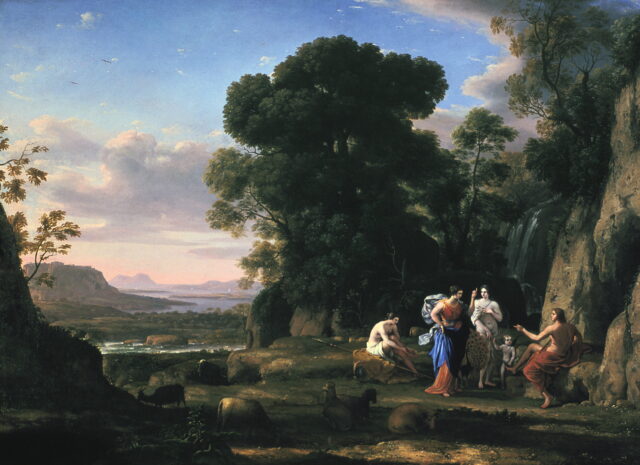
One of the biggest questions surrounding the Venus de Milo has been who the sculpture depicts.
The most widely accepted answer is that Venus is a statue of the Greek goddess Aphrodite. In the written account of the discovery, it’s suggested that it was originally Aphrodite holding the apple of discord, a fruit handed to her by Paris in the Greek myth of the Judgement of Paris. This theory is mainly brought up because of the now-lost hand holding an apple that was found with Venus.
However, there are other theories. One of the most popular is that Venus is actually the sea goddess Amphitrite and was originally grouped with a sculpture of Poseidon found on Melos in 1878. Other theories that have been put forth include a muse, Nemesis or Sappho.
The sculptor who crafted Venus has never been confirmed. This has made it harder to determine who she is.
Venus de Milo in pop culture
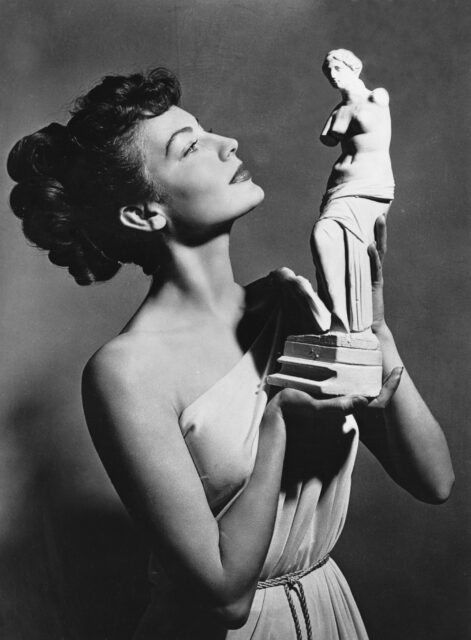
The Venus de Milo is one of the most famous ancient Greek statues ever discovered. When it was first displayed at the Louvre, it immediately became central to the museum’s collection. It’s fame only grew over the course of the 19th century, as photographs, plaster casts and bronze copies of Venus were distributed across Europe.
More from us: The Tree Under Which Isaac Newton Discovered Gravity Is Still Alive and Well
Want The Vintage News delivered straight to your inbox? Subscribe to our weekly newsletter!
Over 70 poems about the Venus de Milo have been published, and many 19th-century artists used the statue as a model. This includes Eugène Delacroix, who may have used it as inspiration for his famous painting, Liberty Leading the People.
